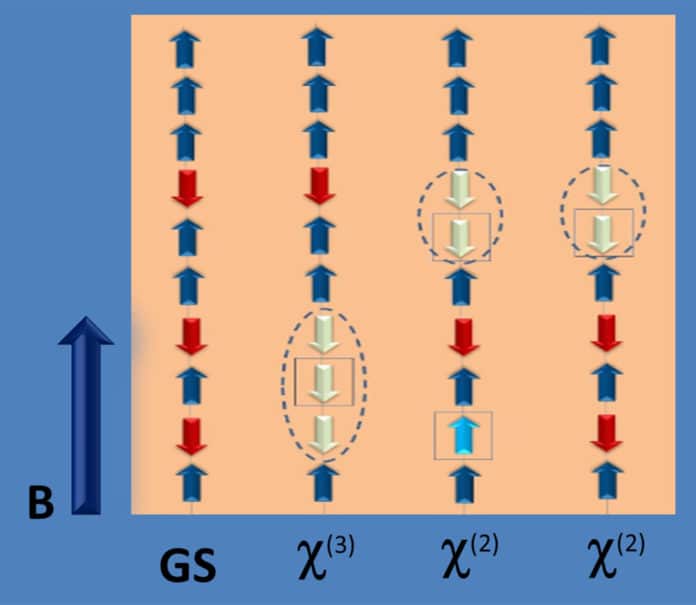Almost one century ago, string states – complex bound states (Wellenkomplexe) of magnetic excitations-Bethe strings – have been predicted to exist in one-dimensional quantum magnets and since then become a subject of intensive theoretical study. However, experimental realization and identification of string states in condensed-matter systems remain an unsolved challenge up to date.
In a new study, by using neutron scattering experiments at various neutron facilities, including the unique high-field magnet of BER II at HZB, an international team of scientists observed Bethe strings for the first time.
Generally, it is impossible to observe Bethe string under normal conditions as they are unstable and obscured by the other features of the system. Scientists, in a new study, used a trick- they isolated the strings by applying a magnetic field.
Scientists detected Bethe strings in a real solid. The team made crystals of SrCo2V2O8, which is a model system one-dimensional antiferromagnet. Just one cobalt atoms have magnetic moments, they all are aligned along one direction, and adjacent moments counterbalance one another.
At the Berlin neutron source BER II, it was possible to investigate the sample with neutrons under extremely high magnetic fields up to 25.9 Tesla. From the data, the physicists obtained a phase diagram of the sample as a function of the magnetic field, and also further information about the internal magnetic patterns, which could be compared with the idea of Bethe that were quantified by a theoretical group led by Jianda Wu.
The HZB physicist Bella Lake said, “The experimental data are in excellent agreement with the theory. We were able to identify two and even three chains of Bethe strings and determine their energy dependence. These results show us once again how fantastically well quantum physics works.”
Journal Reference:
- Dispersions of many-body Bethe strings. DOI: 10.1038/s41567-020-0835-7
